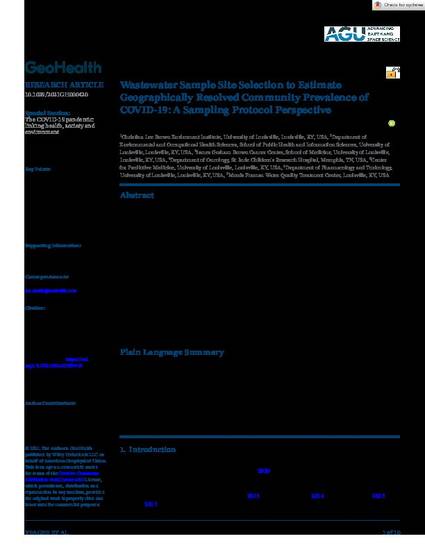
Wastewater monitoring for virus infections within communities can complement conventional clinical surveillance. Currently, most SARS-CoV-2 (severe acute respiratory syndrome coronavirus 2) clinical testing is voluntary and inconsistently available, except for a few occupational and educational settings, and therefore likely underrepresents actual population prevalence. Randomized testing on a regular basis to estimate accurate population-level infection rates is prohibitively costly and is hampered by a range of limitations and barriers associated with participation in clinical research. In comparison, community-level fecal monitoring can be performed through wastewater surveillance to effectively surveil communities. However, epidemiologically defined protocols for wastewater sample site selection are lacking. Herein, we describe methods for developing a geographically resolved population-level wastewater sampling approach in Jefferson County, Kentucky, and present preliminary results. Utilizing this site selection protocol, samples (n = 237) were collected from 17 wastewater catchment areas, September 8 to October 30, 2020 from one to four times per week in each area and compared to concurrent clinical data aggregated to wastewater catchment areas and county level. SARS-CoV-2 RNA was consistently present in wastewater during the studied period, and varied by area. Data obtained using the site selection protocol showed variation in geographically resolved wastewater SARS-CoV-2 RNA concentration compared to clinical rates. These findings highlight the importance of neighborhood-equivalent spatial scales and provide a promising approach for viral epidemic surveillance, thus better guiding spatially targeted public health mitigation strategies.
Available at: http://works.bepress.com/rochelle-holm/15/
